It is always wonderful to visit Hyderabad, which offers an exciting blend of cultures, history, and modernism like nothing else does. By saying this I must admit that there is a lot to see and do in and around Hyderabad. The Chowmahalla Palace, iconic Charminar, Golconda fort, bangle buying, and Irani chai with Osmania biscuits that melt in your mouth. And yes, there is much more—–
One such attraction that you can’t afford to miss when in Hyderabad is the Salarjung Museum. Salar Jung Museum is often referred to as the world’s largest one-man collection. The location of the Salar Jung Museum makes it all the more special. It is quite close to other tourist attractions in Hyderabad like Charminar, Mecca Masjid, High Court, State Central Library, and so on..
The museum is famous not just for its collection, but also for its efforts to preserve history through digitalization and other cutting-edge methods. Salar Jung Museum, with its magnificent architecture that leads into a rich history from all over the world, is a must-see for every art or history enthusiast. One of the three national museums in India, Salarjung museum is located on the South banks of Musi river, Salar Jung Road, at Dar-ul-Shifa in Hyderabad.
Post Contents
History of Salarjung Museum
The Salar Jung Museum was founded with the objective of perpetuating Salar Jung’s reputation as a world-renowned art connoisseur, and it was opened to the public as a private museum on December 16, 1951, by Pandit Jawaharlal Nehru, the then Prime Minister of India. Initially the museum was housed in Diwan Deodi, the residential palace of Salar Jung III. In 1968, the museum was relocated to the main building on the Southern banks of Musi river in the city. Later two more buildings came up on either side of the main building.
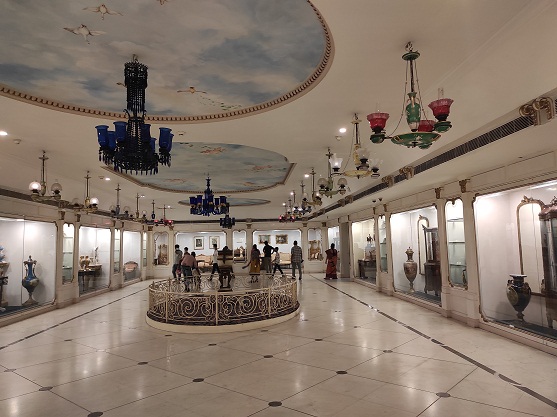
Related Article: Chowmahalla Palace of Hyderabad: An ode to the architectural wonder of Nizam legacy
Through a compromise agreement, the Government of India took over the museum in 1958. The Salar Jung Estate Committee was in charge of this museum until 1958. The Museum was thereafter administered by the Ministry of Scientific Research and Cultural Affairs of the Government of India till 1961. The Salar Jung Museum and its library were designated as a “Institution of National Importance” by an Act of Parliament in 1961.
The majority of this collection was acquired by Nawab Mir Yousuf Ali Khan, also known as Salar Jung III. The Salar Jungs’ passion for collecting art pieces has been passed down through three generations.
Salar Jung III devoted the rest of his life to collecting and enriching the treasures of art and literature after relinquishing the role of Prime Minister to H.E.H., the Nizam VII, Nawab Mir Osman Ali Khan, in 1914. The priceless and rare art objects he collected over a forty-year period now have a place in the Salar Jung Museum as rare to very rare pieces of art.
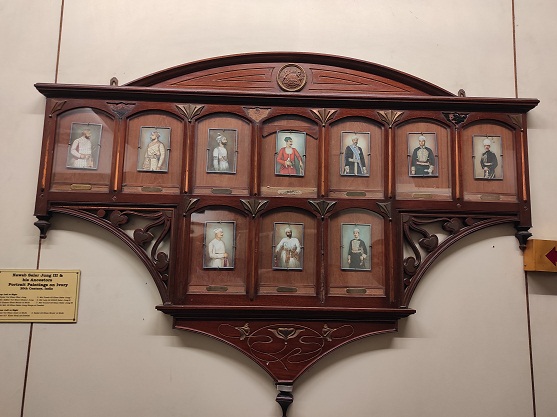
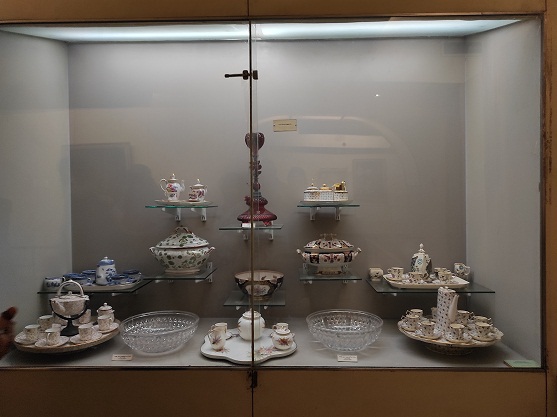
PC: Pratikshya Guru
Similar Article: MP Tribal Museum: Celebrating tribal life/ Madhya Pradesh
Salarjung Museum Collections
The Salar Jung Museum’s collections include reflections of the historical human environment, dating from the 2nd century B.C. to the early 20th century A.D. The museum’s collection includes approximately 46,000 art objects, over 8,000 manuscripts, and over 60,000 printed books. This collection is organised into the sections such as Indian Art, Middle Eastern Art, Persian Art, Nepalese Art, Japanese Art, Chinese Art, and Western Art. Aside from that, “The Founder’s Gallery” is devoted to the legendary Salar Jung family.
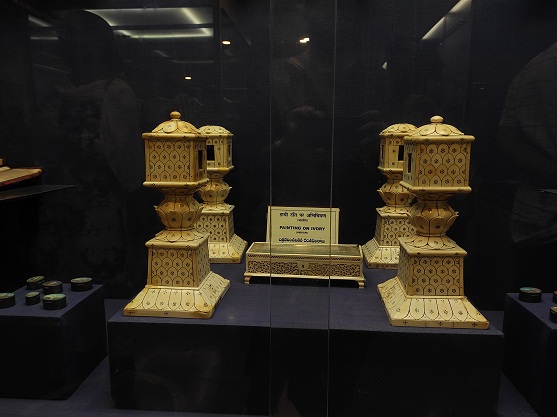
Indian Collections
As you step into the Indian block of the museum, the first gallery devoted to the founders of the museum. Portraits of Salar Jung III and other members of the Salar Jung family may be found in this “Founder’s Gallery.”
Other noteworthy collections the Indian block comprises are Jahangir’s, Nur Jahan’s, and Shah Jahan’s jade-crafted daggers, as well as weaponry belonging to Aurangzeb, Tipu Sultan, Muhammad Shah, Bahadur Shah, and Abul Hasan Qutb Shah. Miniature paintings from the Mughal, Rajasthani, Thanjavur, and Deccan schools are on show. There are also Gandhara and Chola period Indian sculptures on display.
The Indian block of the Salarjung museum also boasts a collection of modern Indian artworks from the Bengal school. The museum exhibits works by Raja Ravi Varma, Abdur Rahman Chughtai, M.F. Hussain, K.K. Hebbar, Rabindranath Tagore, Abanidranath Tagore, and Nandalal Bose.
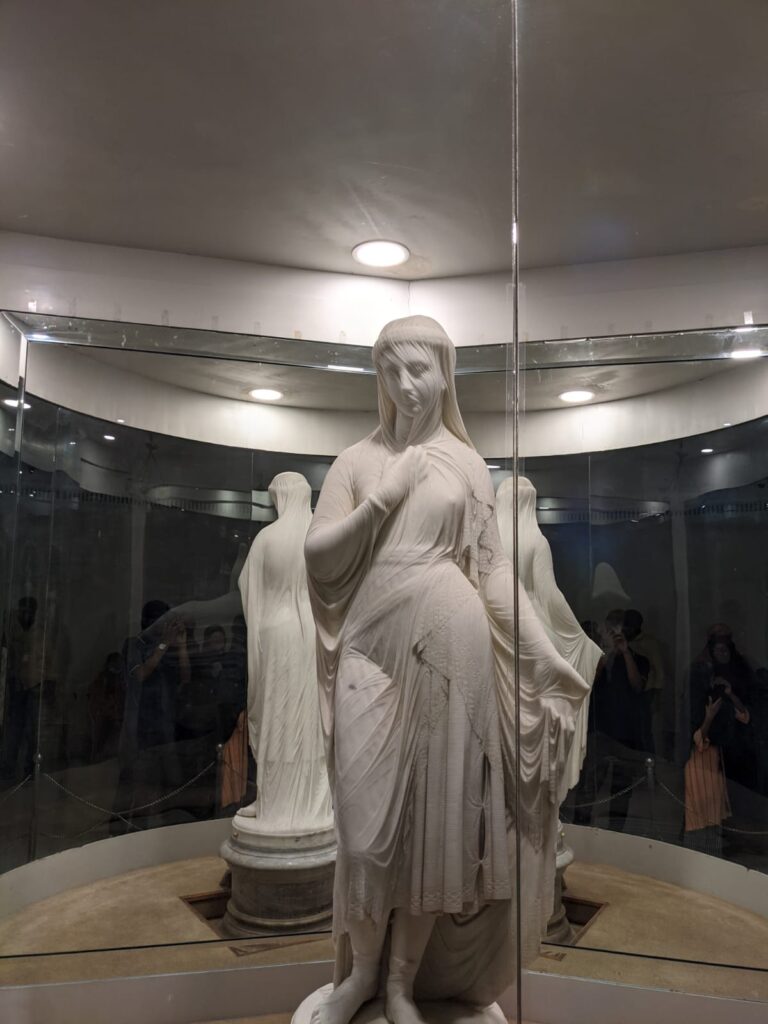
Veiled Rebecca, PC: Hemanth Viswa
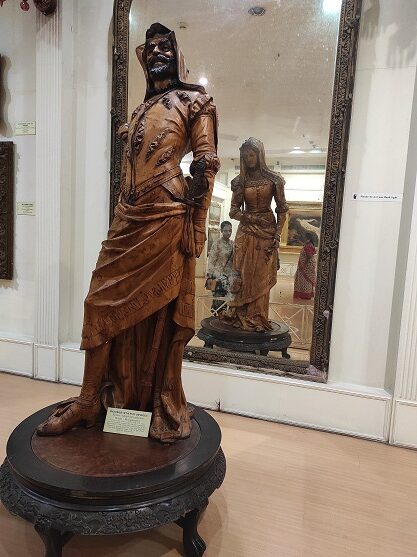
Mephesthopheles and Margaretta, PC: Pratikshya Guru
Must Read: Indira Gandhi Rashtriya Manav Sangrahalaya: Showcasing the real and indigenous India
Western Collections
Salar Jung I acquired the rare “double sculpture” Mephistopheles & Margaretta sculpture on a trip to France in 1876. He also went to Rome and bought a marble statue called Veiled Rebecca. The Salar Jung family had a history of collecting art, and the Salar Jung I, II, and III collections all ended up in the Salar Jung Museum.
European art from the schools of the United Kingdom, France, and Italy is on show. Canaletto, William-Adolphe Bouguereau, and Francesco Hayez are among the renowned artists whose works are on display.
The furniture collection contains pieces from King Louis XIV and Napoleon’s reigns. Salar Jung III amassed around 43,000 objects and 50,000 books and manuscripts, of which just a few are displayed in the museum.
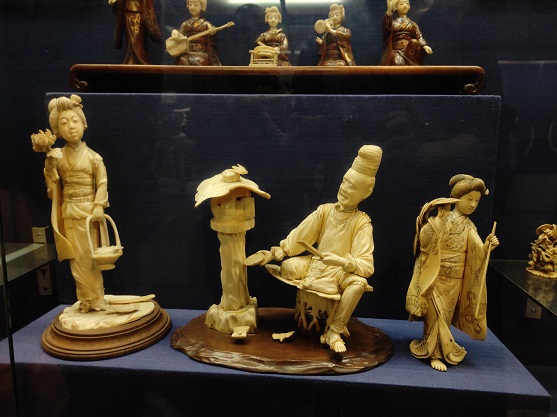
Eastern and Middle East Collections
Salar Jung Museum is one of the few Indian museums with a large collection of Japanese and Chinese art pieces made of porcelain, bronze, enamel, lacquerware, embroidery, paintings, wood, and inlay work. The Middle East is represented through art pieces from Persia, Syria, and Egypt, including carpets, paper (manuscripts), ceramics, glass, metal ware, furniture, lacquer, and so on. Among the museum’s prized collections are a variety of figurative and narrative Persian rugs illustrating “Khusrau” legends.
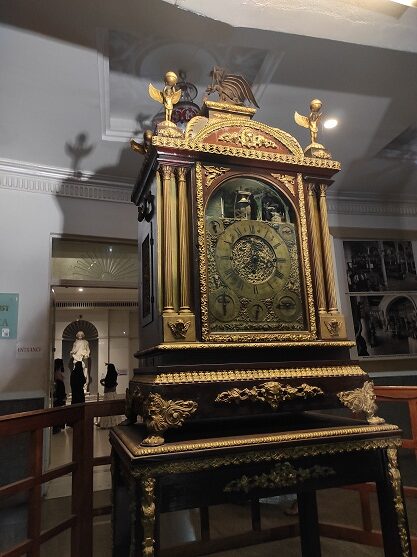
You may also like: A trip to the Udayagiri caves near Bhopal
Collection of Clocks
In the clock room, the visitor is greeted by a wide variety and array of clocks. There are old sundials in the shape of obelisks as well as huge twentieth-century clocks. Others in the collection range from miniature clocks that necessitate the use of a magnifying glass to appreciate their beauty and complexity to stately grandfather clocks from France, Germany, Italy, Switzerland, and Britain, including the musical clock Salar Jung bought from Cook and Kelvey of England. Every hour, a timekeeper emerges from the clock’s upper deck to strike the gong as many times as the hours of the day. The clock is a vintage piece.
The museum also has some excellent examples of clocks from the reigns of Louis XV, Louis XVI, and Napoleon I of France. The most important clock, however, and the one that receives the most visitors each day, is a British Bracket clock. It has a mechanical device that allows a miniature toy figure to emerge from an enclosure, strike the gong, and then return to the enclosure every hour
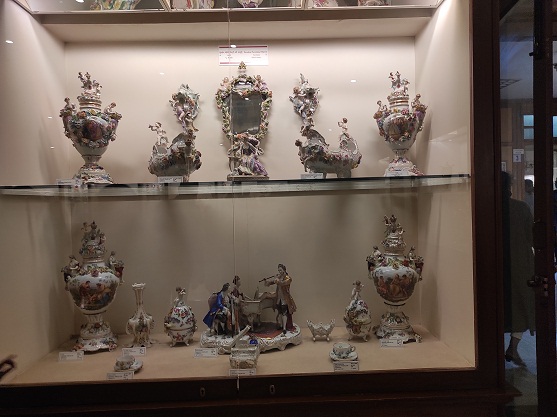
Quran Collections
The Arabic and Persian manuscripts are among the Museum’s most important assets. The works of well-known calligraphers are displayed in the museum. The earliest manuscript on display is the ‘Holy Quran,’ written on parchment in Arabic in ‘Naskh’ script on a rich blue backdrop in the 9th century A.D. Apart from this we have number of Holy Qurans both illuminated and embellished adorning the gallery.
The Quran, written in the ‘Naskh’ style, contains flamboyant Mesopotamian embellishment and calligraphy that is supposed to have been attempted by Yaqut, the court calligrapher of the last Abbasid Caliph Mustasim Billah. It is a masterpiece, bearing the autograph of emperors Jahangir, Shah-Jahan and Aurangzeb.
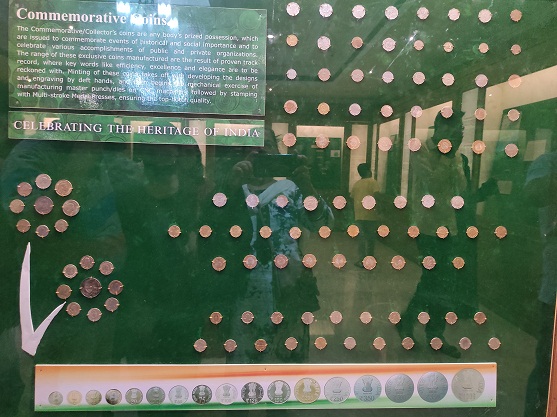
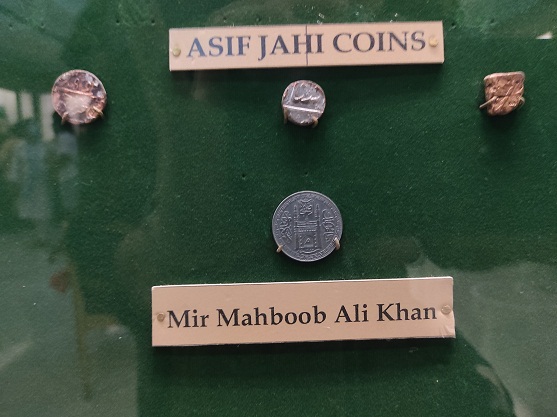
Recommended Read: A Walking Tour of Bhimbetka Rock Shelters and Prehistoric Cave Paintings
Coin collections
The coin gallery was added to the museum in 2015. This is a rare collection on display ranging from the 3rd Century BC to the present times. Interestingly, the coins do not form part of Salarjung’s one-man collection but are donations received during 1962, 1979 and 1981. They fill the missing link in the museum’s rich repository.
You can find the gallery on the first floor of the central block that showcases 600-odd coins of various dynasties in the past 2,300 years.
The collection boasts coins from the Vijay Nagar dynasty to the Bahmani empire, Moghul empire and Modern India. Some Punch Mark coins from the Kushan dynasty are also preserved. The coins are made of Silver, copper,lead and lead.
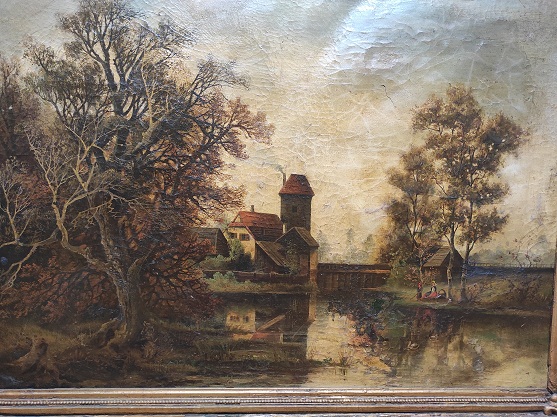
Galleries
The Museum presently has 39 galleries divided into three blocks such as Central Block (27 galleries), Western Block (7 galleries), and Eastern Block (4 galleries), with almost 14,000 items on display.The Indian collections are from the States of Telangana, Tamilnadu, Karnataka, Kerala, Orissa, West Bengal, Uttar Pradesh, Madhya Pradesh, Maharashtra, Punjab, Rajasthan, Himachal Pradesh, Gujarat, Jammu & Kashmir, and places like Kangra, Basholi, Jaipur, Udaipur, Mewar, Hyderabad, Golconda, Bijapur, Kurnool and Nirmal.
The Western collections are from England, Ireland, France, Belgium, Italy, Germany, Czechoslovakia, Venice and Austria. The Eastern collections are from countries like China, Japan, Burma, Korea, Nepal, Thailand, Indonesia and from Middle East countries like Egypt, Syria, Persia and Arabia. The Indian art objects comprise of stone sculptures, bronzes, wood carvings, miniature paintings, modern paintings, ivory, jade, textiles, metal ware, manuscripts, Bidri, arms and Armour, utility ware etc.
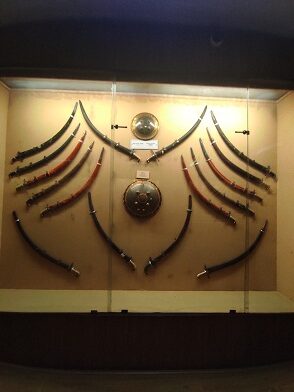
Also Read: Bhojeshwar temple: The unfinished masterpiece of Bhopal
Salarjung Museum Library
The Salar Jung Museum also has a large library with about sixty thousand books, manuscripts, journals, and so on, and it is a testament to the Salar Jung family’s passion of learning. In terms of quality, the library’s manuscript collection, which contains rare Specimens, is one of the richest in the world.
It contains many gems of calligraphic art and ornate embellishment; items with gorgeous decoration and an artistic blending of colours with a profuse use of gold, mineral colours that lavishly used lapis lazuli for blue, pearl for white, shangraf for red, and Zabarjad (emerald) for green. Calligraphers, illustrators, and book binders all tried their best to showcase their various arts and thereby paid tribute to the written word. Salar Jung Museum Library was opened to the public in 1961 by an act of parliament.
The Salar Jung Museum Library is a library of books and manuscripts collected by the Salar Jung family. Some of the items in the collection date back to 1656 A.D. Nawab Mir Turab Ali Khan, Salar Jung I, developed it into a well-knit and full-fledged library, which was then enhanced and expanded by his son Nawab Mir Laiq Ali Khan, Salar Jung II, and finally by Nawab Mir Yousuf Ali Khan, Salar Jung III. The Library and Manuscripts Sections are on the 2nd floor. The Library’s amazing collection includes 62,772 printed works, 41,208 of which are in English, 13,027 in Urdu, 1108 in Hindi, 1105 in Telugu, 3,576 in Persian, 2,588 in Arabic, and 160 in Turkish languages.
Research journals, albums of rare pictures, and exquisite engravings are among the English printed books. This large collection’s most notable feature is that it includes a wide range of specialised subjects of learning, including Art, Architecture, Archaeology, Physical, Biological, and Social Sciences, Literature, History, and Travel. It also has a library of religious texts on Islam, Hinduism, Christianity, and other faiths.
The collection’s earliest book is an English volume published in 1631 A.D. The library is continually refreshed with new arrivals covering topics such as Art, Sculpture, Paintings, Ceramic Arts, Decorative Arts, Museology, Tourism, and so on. Apart from the Museum’s personnel, research academics (both from India and outside) visit the Library on a regular basis.
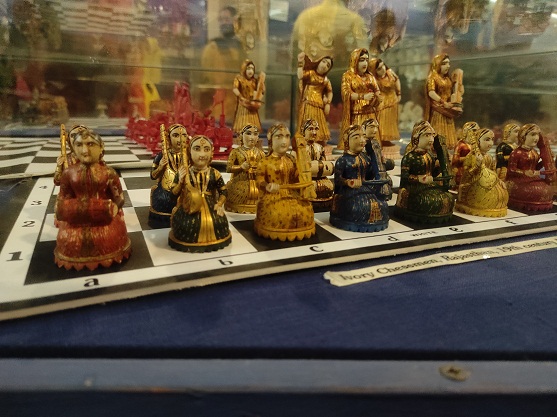
Must Read: Sanchi Stupa: All you need to know about this Buddhist treasure
Travel Tips
If you are an art lover or a history enthusiast and take interest in ancient artifacts, then even an entire day would be insufficient for you. Even a routine tourist has to take at least three hours to have a good look at the museum.
How to get there?
The Salar Jung Museum is very close to the Hyderabad Central Bus Station. You can take a bus from the Hyderabad Bus Stand to Uppuguda, which takes around 5 minutes to reach the Salar Jung Museum Bus Stand. It’s about a 2-minute walk to the museum from there. The museum is only 2 minutes away by taxi from the Hyderabad Bus Stand. The Hyderabad Deccan and Nampally railway stations are also very near the museum.
When to visit?
The Salar Jung Museum is best visited during the winter season. In Hyderabad, the months of October to March are cool and pleasant. It is ideal for a leisurely and delightful day of sightseeing. The morning hours of 11 a.m. to 2 p.m. are great for visiting the museum.
It is better to avoid visiting Hyderabad during the summer months because it is quite hot, resulting in excessive exhaustion and dehydration. Monsoon time is known for its high winds and heavy rains, making it unwise to visit the museum at that time of year.
Entry fee
Students and children below the age of 18 are exempted from entry fees. All others need to pay an amount of Rs 20 as the entry fee. Foreign tourists are charged Rs 500 per person. You have to pay Rs 50 extra for still photography.
Visiting hours
The museum is open for visitors every day from morning 10 AM to the evening at 5 PM. The museum remains closed on Fridays and government holidays.

